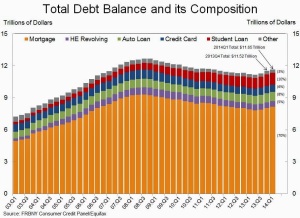As recently as a few months ago, doctors were held in high esteem and educated people believed that medicine could be useful. All that changed, of course, with the medical profession’s stunning failure to prevent or even predict the breakout of ebola in West Africa. Worse yet, many doctors to this very day cling to their old ways of thinking, writing prescriptions, setting broken bones, and performing surgery in bull-headed defiance of the urgent need to jettison everything we know about medical practice and start over from scratch.
Nobody, of course, writes such nonsense about medicine. Why, then, do so many write equivalent nonsense about economics?
Most economists failed to predict the 2008 financial crisis and ensuing recession for pretty much the same reason most doctors failed to predict the 2014 ebola epidemic — their attention was, quite reasonably, directed elsewhere. It’s easy to say in hindsight that if economists had paid more attention to the shadow banking system, they’d have seen what was coming. But attention is finite, and if economists had paid more attention to the shadow banking system, they’d have paid less attention to something else.
For a little perspective, have a look at this chart showing U.S.~per capita income in fixed (2005) dollars:
That little downward blip you see near the top is the recent crisis. The somewhat bigger downward blip in the 1930s is the Great Depression. The moral is that in the overall scheme of things, recessions don’t matter very much. At the trough of the Great Depression, people lived at a level of material comfort that would have seemed unimaginably luxurious to their grandparents. Today, while Paul Krugman continues to lament “the mess we’re in”, Americans at every income level live far better than Americans of, say, 1980. If you doubt that, you surely don’t remember what life was like in 1980. Here’s how to fix that: Pick a movie from 1980 — pretty much any movie will do — and count the “insurmountable” problems that the protagonist could have solved in an instant with the technology of 2014. Or reread any of the old posts on this page.
If you care about human well-being, recession-fighting is small potatoes. It’s that long-term upward trend that matters. And economists, fortunately, understand a lot about what it takes to nourish that trend — things like well-enforced property rights, the rule of law, free trade, sound money, limited regulation and low marginal tax rates. Even more fortunately, economists have managed, however imperfectly and with fits and starts, to impress that understanding on the minds of policymakers. As a result (and going back, at least, to the repeal of the Corn Laws), we’ve had better policies and greater prosperity.
To throw out all that hard-won knowledge because we failed to prevent a financial crisis would be like closing all the hospitals because doctors failed to prevent an epidemic.
Moreover, it’s entirely possible that some of the best policies for fighting recessions are inimical to long-term growth. It could easily follow that even if you knew exactly how to fight recessions, you might prefer not to.
It’s a very good thing that some economists are trying to understand recessions, and a very good thing that they’re accounting for the lessons of the past few years. It’s also a very good thing that most economists are working in the myriad of other areas where we’re capable of doing good. Another very good thing is historical perspective. The current so-called “mess” that economists have (partly) gotten us into is not just the most prosperous era in human history; it is prosperous beyond the wildest imaginings of your parents’ generation. And yes, economists helped get us here.
A Little Perspective
Steve Landsburg
Mon, 06 Oct 2014 06:01:23 GMT



















You must be logged in to post a comment.